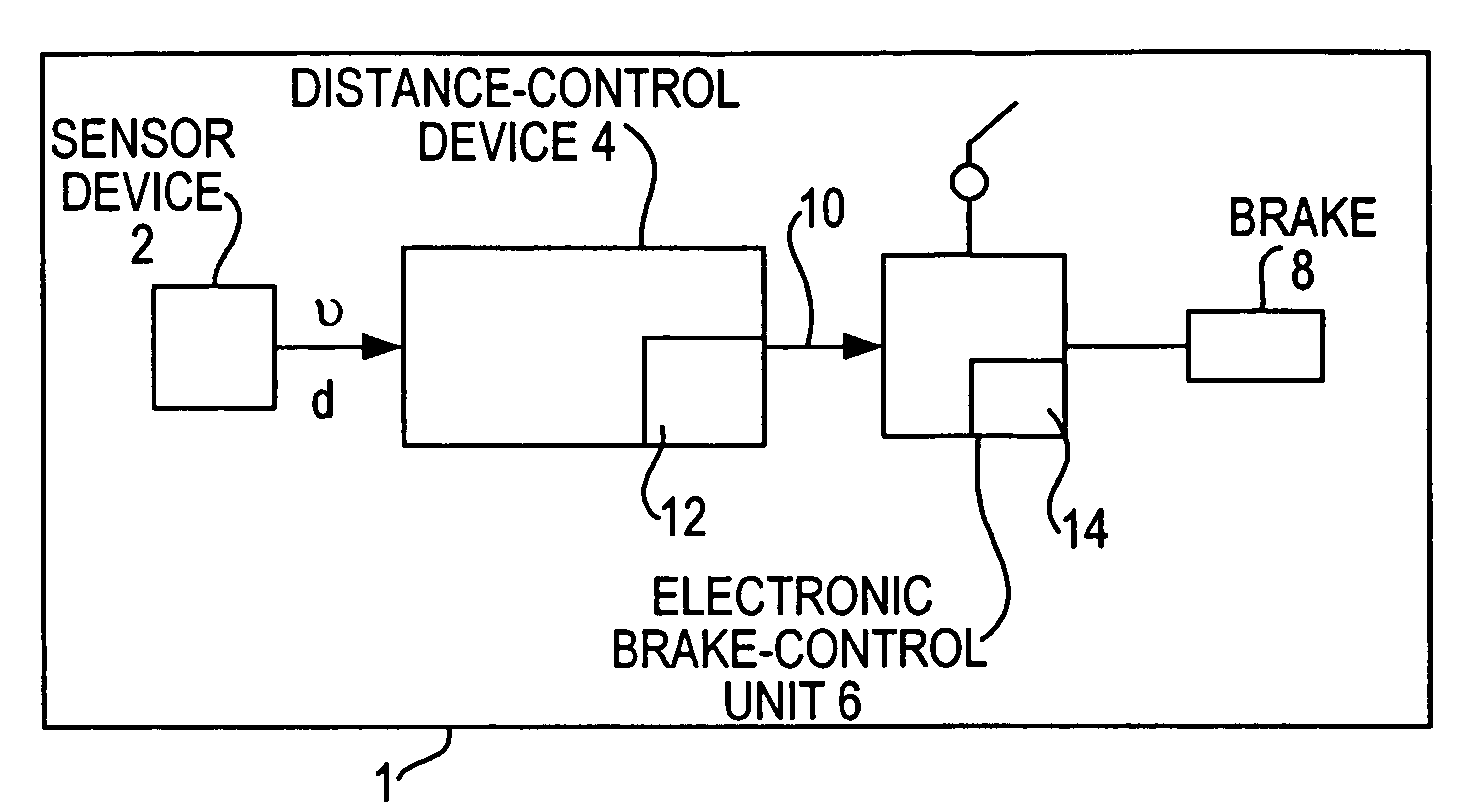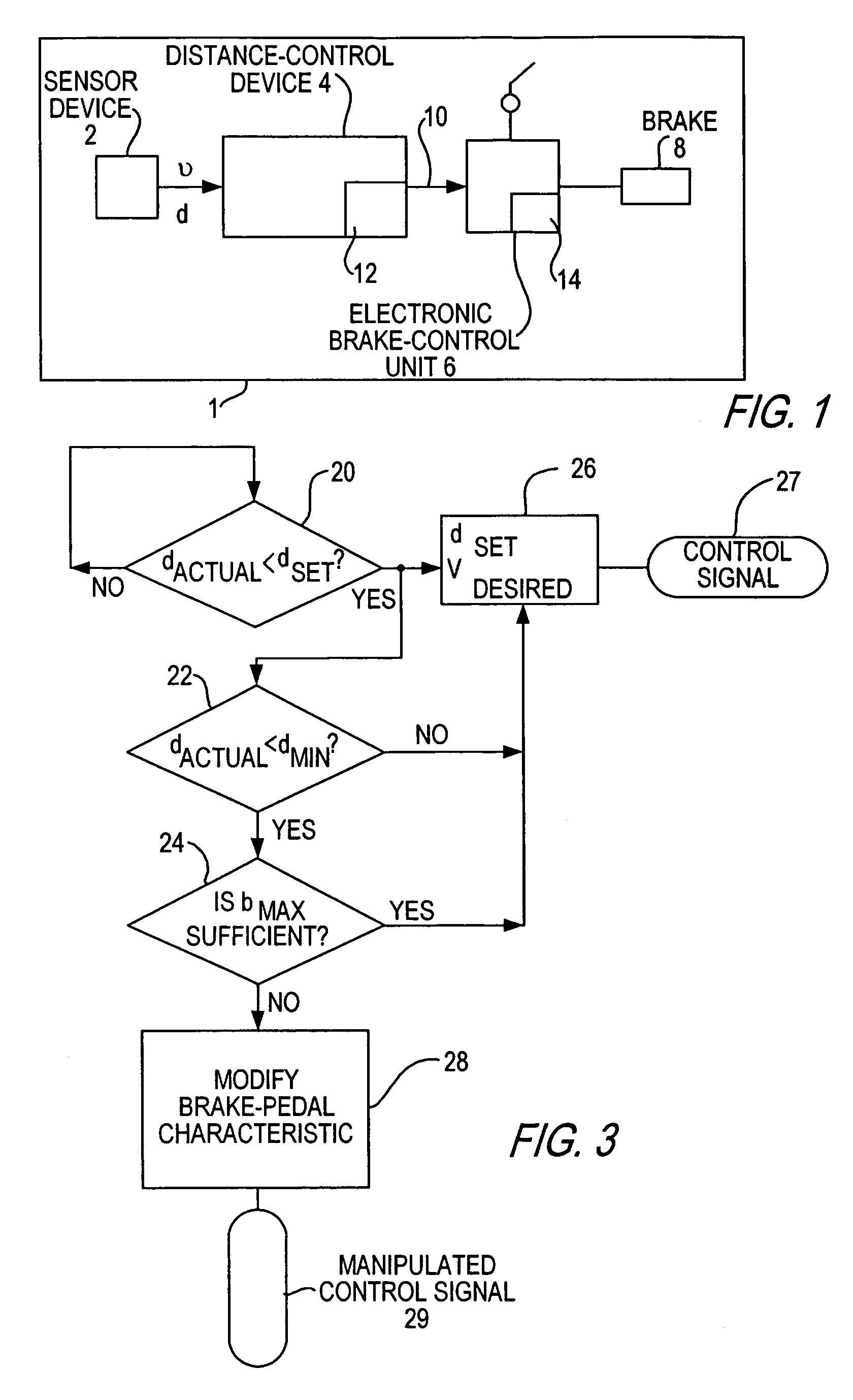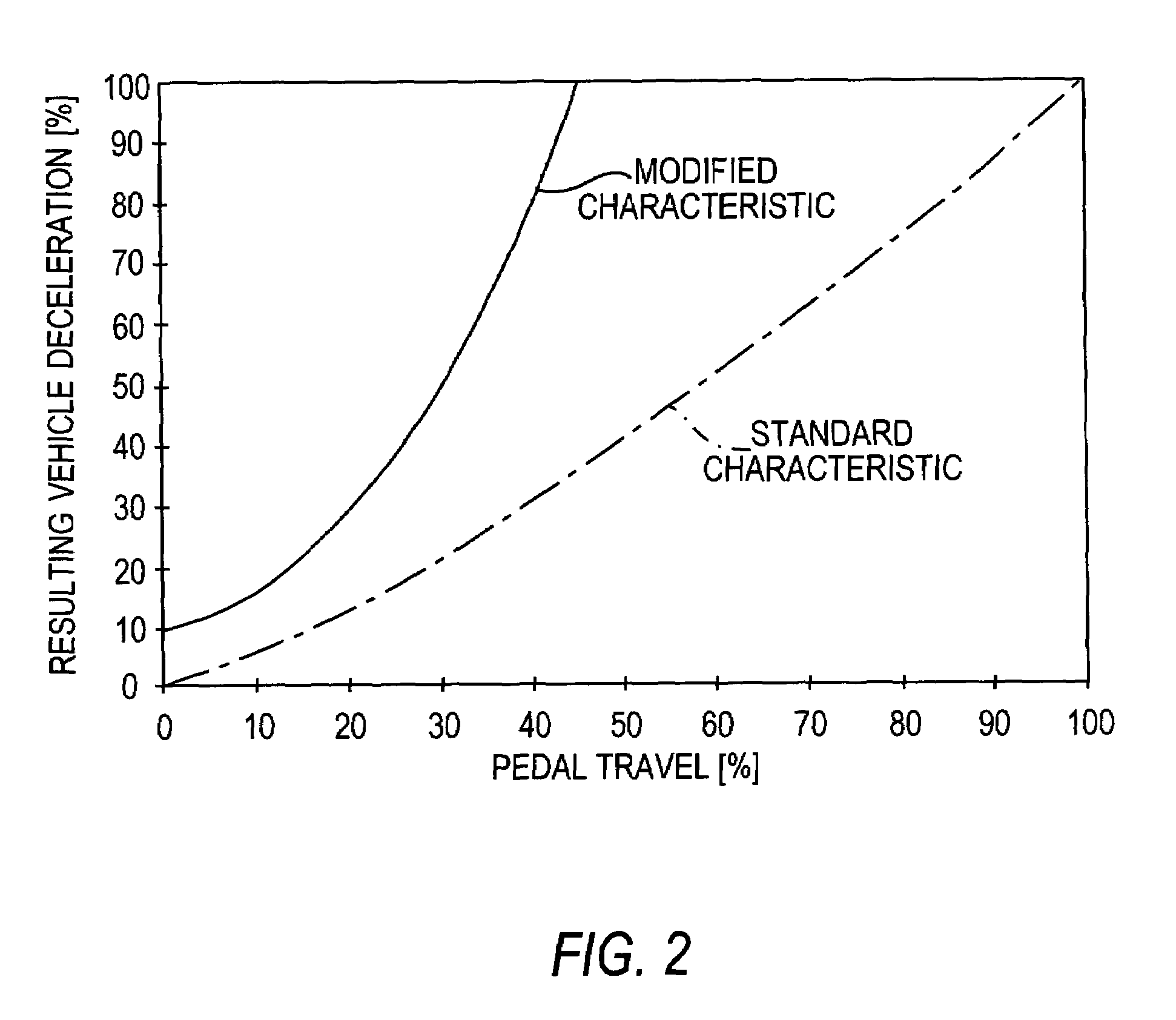Automatic distance control method and system for motor vehicles
a technology of automatic distance control and motor vehicles, applied in simultaneous traffic control systems, process and machine control, instruments, etc., can solve the problems of utilizing the full braking force available, limiting the maximum deceleration possible to about 2 m/s
- Summary
- Abstract
- Description
- Claims
- Application Information
AI Technical Summary
Benefits of technology
Problems solved by technology
Method used
Image
Examples
Embodiment Construction
[0017]Referring now to the drawing figures, FIG. 1 is a block diagram of a vehicle 1 equipped with an automatic vehicle distance-control system according to a preferred embodiment of the present invention. A sensor device 2 transmits distance signals d and speed signals v to a distance-control device 4. Distance-control device 4 evaluates these signals according to a computer program and calculates the distances to a lead vehicle as well as the speed thereof.
[0018]Vehicle 1 also includes an electronically controllable brake system having an electronic brake-control unit 6, which controls at least one vehicle brake 8 as a function of a braking command from the driver as produced by a brake-value generator (such as a brake pedal) actuated by the driver. Brake-control unit 6 is electrically connected via a data line 10 to distance-control device 4. Via data line 10, distance-control device 4 transmits a brake-ready signal, a brake-demand signal or further signals as necessary. Brake-co...
PUM
 Login to View More
Login to View More Abstract
Description
Claims
Application Information
 Login to View More
Login to View More - R&D
- Intellectual Property
- Life Sciences
- Materials
- Tech Scout
- Unparalleled Data Quality
- Higher Quality Content
- 60% Fewer Hallucinations
Browse by: Latest US Patents, China's latest patents, Technical Efficacy Thesaurus, Application Domain, Technology Topic, Popular Technical Reports.
© 2025 PatSnap. All rights reserved.Legal|Privacy policy|Modern Slavery Act Transparency Statement|Sitemap|About US| Contact US: help@patsnap.com



